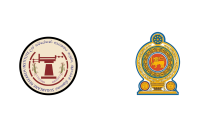
Crop Nutrition Division
“Sustainable increase of productivity and profitability of the sugar industry through improved soil fertility”
Division of Crop Nutrition (CN) is one of the Research and Service providing divisions in the Sugarcane Research Institute.
The CN division is mainly conducting research to improve the soil fertility and optimize the sugarcane plant nutrition.
Check our priority areas for more information
The CN division provides wide range of laboratory services to support both sugarcane industry requirements and other research activities conducted at SRI.
Main laboratory analytical services
Further, the CN division facilitates dissemination of knowledge and technologies among sugarcane farmers, industry personals and students (Universities, Training institutes and Schools)

Fertilizer Recommendation for Sugarcane Growing Areas in Sri Lanka
The following important instructions should be followed when applying fertilizers to your sugarcane cultivation
- Fertilizer should be applied when the soil is moist
- Under rain-fed cultivation, the top dressing should be applied with rains
- Once applied, the fertilizer should always be covered with a layer of soil
- Trash should be left on the soil as mulch without burning
- The rate of trash degradation could be enhanced by the application of Urea at the rate of 25 kg per hectare (Dissolve with water and sprayed as a liquid or applied directly onto trash under moist conditions)
- The soil pH should be monitored every 3-4 years
- Organic fertilizer with a pH around 7 could be incorporated into the soil to improve the retention of nutrients in low-yielding lands. SRI recommendations for applying filter mud and vinasse, separately or in the form of compost for sugarcane-growing fields are given below.
- Option 1 – Application of 10-20 tons of filter-mud mixed vinasse compost before planting
- Option 2 – Application of 20 – 30 tons of filter-mud application at 2-3 weeks before planting
- Option 3 – Application of vinasse to sugarcane plantations at the rate of 40 m3/ha once every 3 years, one week before planting and soon after ratooning
The Crop Nutrition Division of SRI will monitor the soil and plant conditions and make amendments or revise the recommendations whenever necessary.
Click on the Area to Get the Fertilizer Recommendation Information
Fertilizer Recommendation for Uda Walawe Sugarcane Growing Area
Fertilizer Recommendation for Sevanagala Sugarcane Growing Area
Fertilizer recommendation for rain-fed sugarcane cultivation in Nucleus estate, Settler section and Out-grower areas (Buttala, Wellawaya, Badalkumbura, Moneragala and Siyambalanduwa) of Pelwatte.
Pelwatte sugarcane-growing Alkaline soils
Hingurana Reddish Brown Earths (RBE)
Hingurana Non-Calcic Brown Soils (NCB)
Hingurana Alluvial Soils
Kantale Sugarcane-growing Soils
Killinochchi Sugarcane-growing Soils
Upcountry Intermediate Zone (Passara etc.)
Low country Intermediate Zone (Mahiyanganaya, Padiyathalawa, Maha Oya etc.)
Our Achievements
Development of "Sugarcane App" (උක් සවිය)

Digital Soil Nutrient Maps for Pelwatte Settler and Nucleus Sugarcane Growing Area
Divisional Priority Areas...
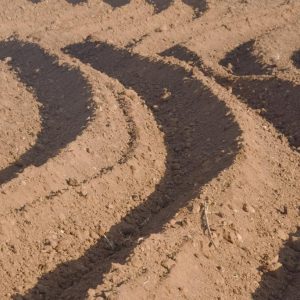
Fertilizer Recommendations
Suitable fertilizer recommendations will be provide based on the results of research findings and laboratory analytical results for all the sugarcane growing areas in Sri Lanka
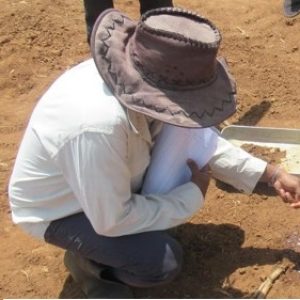
Exploring soil characteristics
Our research activities are aimed at understanding the status of sugarcane-growing soils in Sri Lanka. We conduct soil surveys in different sugarcane-growing areas, perform accurate laboratory soil analysis, and engage in digital mapping activities to support this task
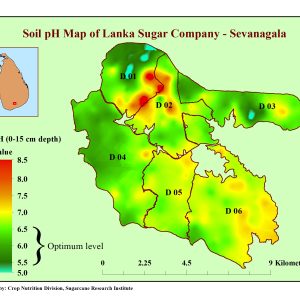
Integration of New Technology
New technological advancements, such as UAV image analysis, expert systems development, machine learning model development, Digital soil maps development and software development, are used to aid in nutrient management for sugarcane cultivation
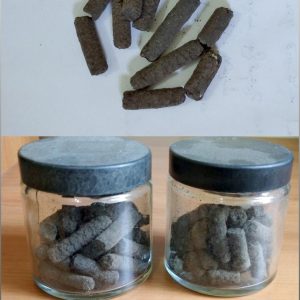
Introducing Alternative Fertilizers
The production, identification, and evaluation of new fertilizers, such as compound fertilizers, organic fertilizers, liquid fertilizers, and slow-releasing fertilizers, are carried out to enhance the nutrient use efficiency of sugarcane cultivation in Sri Lanka.
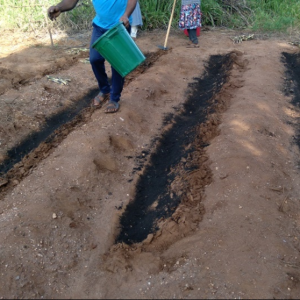
Sugarcane industry by-products
The sugarcane industry produces by-products such as filter mud, vinasse, and fly ash in varying quantities. The CN division’s research focuses on the sustainable use of these by-products as fertilizer amendments to enhance the overall quality of sugarcane-growing soils.
Ongoing Research Activities..
CN/02/22: Management zone-based site-specific fertilizer management for sugarcane cultivation in Sri Lanka
Site-specific fertilizer management requires optimizing nutrient inputs by considering both temporal and spatial variability of the sugarcane field. Variability mapping and crop reflectance sensor-based techniques are prominent for implementing site-specific management of crop inputs. But traditional soil and plant sampling methods are not economical when considering the level of accuracy needed in larger sugarcane cultivation areas where the level of spatial nitrogen variability can exist over short distances in fields. The sensors used to identify and collect spectral and spatial information, equipped to satellite or airborne vehicles and their uses depend on the scale of the level of expected details. Satellite images have been used to derive spectral and spatial information, yet in the case of high-level detail scales monitoring, the use of Unmanned Aerial Vehicles (UAVs) is becoming great equipment for this task. Multiple vegetation indices derived from the visible and infrared spectrum of conventional, multispectral and hyper-spectral sensors have been created to assess different agronomic parameters such as leaf area index (LAI). Chlorophyll content, sugarcane crop biomass and leaf nitrogen concentration throughout the world.
Therefore, sensor based methods by light reflectance measurements have been used for sugarcane cultivation to estimate the real time crop status of the plants. Multispectral drones, real time soil status measurement technologies, digital mapping opens up new pathways to monitor and support decision making processes in a more precise way. With that intention this research project will design and carry out the following objectives.
Objectives and targets
- To evaluate the potential of delineating site-specific management zones using precision agriculture techniques for sugarcane cultivation
- To develop site-specific nutrient management zones using precision agriculture techniques for sugarcane cultivation
- To evaluate the effectiveness of nutrient management zones for sugarcane cultivating areas in Sri Lanka
Contact Mr. U.W.L.M. Kumarasiri for more details
CN/03/22: Appropriate organic-based plant nutrition study for commercial sugarcane cultivation
Organic sugarcane cultivation avoids the use of synthetic fertilizer and emphasizes the use of organic inputs to provide nutrients to the plant. In organic sugarcane cultivation the main inputs used are agro-industrial residues, such as filter-mud, vinasse and natural phosphates. Mineral fertilizers are supplied to maximize the productivity of organic sugarcane cultivation. In Brazil it has been found sugarcane plants respond positively to fertilization with filter-mud which has raised the accumulation of P, K and Cu in aerial parts of the plants. The Crop Nutrition Division of the Sugarcane Research Institute has developed a compost using industry by-products i.e. filter mud and vinasse of the Sugar and Ethanol Industry. On average 200-300 Litres of vinasse can be applied for a 1 ton of filter-mud to maintain the optimum moisture level of the heap which is important for the composting process. As per the conditions of the heap, vinasse can be applied again in, timely intervals without disturbing the process and quality of the end compost product.
The prepared compost will be used as the baseline to initiate organic compost/fertilizer research by the Crop Nutrition Division which will be carried out to expose the actual situation of organic cultivation compared with application of inorganic fertilizer.
Objectives and targets
- To investigate the performance of cane and sugar parameters of sugarcane with the usage of different quantities of the prepared organic compost mixture.
- To investigate the possibility of reducing the amount and cost of organic compost mixture for sugarcane cultivation without an economic loss.
CN/04/22: Development and testing improved organic amendments for sugarcane cultivation
There are different products of organic compost and organic fertilizers available in the market to be used in crop cultivation. Suitable products should be identified for sugarcane cultivation where those should be tested at laboratory and field level. In addition organic related material that enhances the soil could be developed and one such is biochar which could be used to improve the soil. Biochar is a carbon rich substance and it is produced during the thermal decomposition of organic wastes under a limited supply of oxygen and at relatively low temperatures (<7000C). Biochar is characterized by its high content of organic carbon and the low susceptibility to degradation. When compare to the biomass materials, biochar has a higher surface area and porosity, catalytic activity and physicochemical activity. Biochar has applications in the areas of soil improvement, mitigation of climate change, energy production and waste management. Biochar improves soil physical and chemical properties. Raising soil pH, increasing water holding capacity, increasing cation exchange capacity and nutrient retention are few soil benefits from the biochar. Also biochar creates an environment with higher aeration which causes to improve the soil microbial activity and thereby helps to improve plant growth and crop yield. For selectively improve the physicochemical properties of soil, different types of biochars can be produced by selecting specific biomass and production conditions.
The characteristics of biochar vary depending on the type of biomass and the production conditions like treatment temperature, heating rate and holding time. Various types of biomass like coconut husk, coconut shell, rice husk, rice straw, sugarcane bagasse, sugarcane waste straw, palm shell, corn straw, wheat straw and coffee husk have explored for the potential to produce biochar through pyrolysis. For efficient and economical production of biochar the availability and the composition of biomass is very important. The cellulose, hemicellulose, lignin, fixed carbon content and volatile matter content of the biomass is significantly affecting for the biochar properties and its morphology. The biochar production could be carried out by two methods namely, traditional and using modern techniques. As the traditional approaches there are ancient methods and conventional pyrolysis techniques like slow pyrolysis and fast pyrolysis. Gasification, hydrothermal carbonization, electro modification and modified traditional methods like flash pyrolysis, vacuum pyrolysis and microwave pyrolysis are modern approaches.
Objectives and targets
- To identify commercially available organic amendments suitable for sugarcane cultivation in Sri Lanka
- To compare the characteristics of various sugarcane biomass; bagasse, sugarcane waste from mini mill and sugarcane trash derived biochars from laboratory and barrel techniques.
- To determine the effect of biochar on improvement of soil fertility of long-term sugarcane growing soils.
- To identify the best amounts of boiler-ash as a soil amendment enhance its use effectiveness.
CN/01/24: Analyses of soil, plant and sugar samples for other divisions of SRI and sugar companies
At present, about 2000-3000 cane samples, leaf samples and soil samples are analyzed annually at the crop nutrition laboratory. Most of the samples come from the experiments conducted by other divisions of SRI. Providing required analytical facilities is one of the prime objectives of SRI.
Objectives and targets
To analyze the samples of other divisions at SRI and improve the laboratory methods according to acceptable standards and for the requirements of sugar companies.
Digital Soil Maps of Sevanagala and Pelwatte Sugarcane Growing Area
Interactive Soil Map for Sevanagala Sugarcane Growing Area
This interactive map was developed using limited number of soil samples and predictive mathematical models. Hence these values act as a guideline rather than actual values
Publications
Peer-Reviewed / SCI Journals
- Kumarasiri, U.W.L.M., Vitharana, U.W.A.,Ariyawansha, T. and Kulasekara, B.R.(2024). Use of drone imagery to predict leaf nitrogen content of sugarcane cultivated under organic fertilizer application. Tropical Agricultural Research, 35(1): 11-23. https://doi.org/10.4038/tar.v35i1.8700
- Weerasinghe, H.A.S., Gunaratne, G.P., Jayakody, A.N. and Dharmakeerthi, R.S., 2022. Micronutrient Status in Commercial Sugarcane-growing Alfisols at Sevanagala, Sri Lanka. Tropical Agricultural Research, 33(3), pp.271–279. DOI: http://doi.org/10.4038/tar.v33i3.8571
- Narmilan, A., Gonzalez, F., Salgadoe, A.S.A., Kumarasiri, U.W.L.M., Weerasinghe, H.A.S., Kulasekara, B.R. Predicting Canopy Chlorophyll Content in Sugarcane Crops Using Machine Learning Algorithms and Spectral Vegetation Indices Derived from UAV Multispectral Imagery. Remote Sens. 2022, 14, 1140. https://doi.org/10.3390/rs14051140
- Jayasekera, S.K., T.G.Y.Madusanka, C.P. Rupasinghe, H.A.S. Weerasinghe, C.L. Abayasekera, S. Seneweera and R.R. Ratnayake (2021). Bagasse and vinasse, factory wastes from sugarcane industry as potential substrates for bioethanol production. Journal of National Science Foundation, Sri Lanka Vol. 49 (2): 169-182.
- B.R. Kulasekara, H.A.S. Weerasinghe and B.D.S.K.Ariyawansha (2021). Production of organic fertilizers by using sugarcane industry by-products of Sri Lanka: A preliminary investigation. Journal of Technology and Value Addition. Uva wellassa University of Sri Lanka, Vol. 3(1):76-89.
- Weerasinghe, H.A.S., Gunarathne, G.P, Jayakody, A.N. and Dharmakeerthi, R.S. (2020). Variations in Soil Chemical Parameters of Long term Sugarcane-growing Alfisols under contrasting Cropping Conditions at Sevanagala, Sri Lanka. Tropical Agricultural Research. Vol. 31(2): 55-64.
- Weerasinghe, H.A.S., Ariyawansha, B.D.S.K. and Wijesuriya, A. (2017). Response of Sugarcane (Saccharum hybrid spp.) Varieties SL 96 128 and SL 96 328 to Nitrogen, Phosphorous and Potassium under Irrigation at Uda Walawe, Sri Lanka: A preliminary Analysis. Sugarcane Sri Lanka. 3: 11-16.
- Weerasinghe, H.A.S., Abeysinghe, N.S. and Ariyawansha, B.D.S.K. (2015). The effects of High-grade Eppawala Rock Phosphate as a phosphorous substitute on yield and quality of sugarcane in Sri Lanka. Sugarcane Sri Lanka. 2: 22-25.
- Weerasinghe, H.A.S., Chandana, H.L.N. and Gunaratne, G.P. (2014). pH buffering capacities of Sugarcane-growing soils at Sevanagala, Sri Lanka. Sugarcane Sri Lanka. 1: 34-39.
- Bodhinayake, W.L., Dharmawardene, N. (2001) Studies on nutrient removal from Alfisols by sugarcane variety CO 775 under irrigation. j.Soil Sci.Soc.Sri Lanka. Vol. 13:40-45
- Bodhinayake, W.L., Thenabadu, M.W., Somapala, H., Dharmawardene, N. (1998). Effects of sub-soiling on Soil Properties and Root Distribution in Sugarcane. Tropical Agricultural Research, Vol. 10: 48-60.
- Bodhinayake, W.L., Mapa, R.B. (1989). Determination of insitu field capacity of noncalcic brown, soils. j.Soil Sci.Soc.Sri Lanka. Vol. 6:78-93.
- Bodhinayake, W.L., Mapa, R.B. (1988). Characterization of Soil Hydraulic Properties of the Non-Calcic Brown Soils, J.Soil Sci.Soc.Sri Lanka. Vol. 5:95-104
- Bodhinayake, W.L., Mapa, R.B. (1988). Characterization of Soil Moisture Retention Relationship in Non-Calcic Brown Soils (Haplustalfs). Tropical Agriculturist, Vol. 144:145-153.
Abstracts/ Extended Abstract /Conference papers
- Kumarasiri, U. W. L. M., Vitharana, U. V. A., Ariyawansha, T., & Kulasekara, B.R. (2023). Use of Drone Imagery to Predict Leaf Nitrogen Content of Sugarcane. 1, 23
- Kulasekara, B.R., Maralanda, A., Weerasinghe, H.A.S. and Kumarasiri, U.W.L.M. (2022). Isolation of Indigenous Soil Microbes and evaluation of storage effects to develop a viable soil-microbial inoculum. 22nd World Congress of Soil Science – Glasgow 2022-July
- Kulasekara, B.R., Ariyawansha, B.D.S.K., Weerasinghe, H.A.S. and Kumarasiri, U.W.L.M. (2022). Effect of ZnSO4 on Cane Quality of the Variety SL 96 128, under Alfisols at Uda Walawe Sri Lanka. International Symposium on Agriculture and Environment (ISAE 2022-May) Faculty of Agriculture, University of Ruhuna, Sri Lanka.
- R. Kulasekara and H.A.S. Weerasinghe (2021) A Preliminary Study: Effects of Sugarcane-byproduct, Vinasse on Chemical Properties of Soil and Initial Growth of Sugarcane Variety SL 83 06 and SL 96 128. Eurosoil 2021 Geneva, virtual conference. (https://b-com.mci-group.com/Abstract/Statistics/AbstractStatisticsViewPage.aspx?AbstractID=481216).
- Weerasinghe, H.A.S., Gunarathne, G.P, Jayakody, A.N. and Dharmakeerthi, R.S. (2021). Micronutrient Status in Commercial Sugarcane-growing Alfisols at Sevanagala, Sri Lanka. Abstract in the proceedings of the Postgraduate Institute of Agriculture (PGIA) Annual Congress. 16th & 17th November 2021. PGIA, University of Peradeniya.
- Suvimal, W.K.D.C., Wijesekera, I., Karunarathna, W.K.D.S., De Silva, A.L.C., Weerasinghe, H.A.S., Maralanda, S.M.T.A., Wijesuriya, A. and Wickramasinghe, I. (2018). Comparative biochemical analysis of granulated jaggery from peeled and unpeeled sugarcane stems. Proceedings of the SLCARP International Agricultural Research Symposium 2018, Taj Samudra Hotel, Colombo, Sri Lanka, 13-14 August 2018.
- Weerasinghe, H.A.S., Gunaratne, G.P., Dharmakeerthi., R.S. and Jayakody, A.N. (2018). Current status of important chemical characteristics of the long-term sugarcane-growing soils under rain-fed and irrigation at Sevanagala, Sri Lanka. Abstracts proceeding International Conference on Sustainability of Smallholder Agriculture in Developing Countries under Changing Climate Scenario at CSAUAT, Kanpur (UP), India, 14-17 February 2018.
- Weerasinghe, H.A.S., Seneviratne, G. and Chandrasiri, K.P.N.K. (2014). Fungal-bacterial biofilms for sugarcane trash decomposition. Proceedings of the International Conclave on Sugar Crops, Sweetners and Green Energy from Sugar Crops: Emerging Technologies, 15-17 February 2014 at the Indian Institute of Sugarcane Research, Lucknow, India.
- Weerasinghe, H.A.S., Abeysinghe, N.S. and Ariyawansha, B.D.S.K. (2012). The effects of High-grade Eppawala Rock Phosphate as a phosphorous substitute on yield and quality of sugarcane in Sri Lanka. – Extended abstract, Proceedings of the Annual Symposium on Minor Export Crops (ASMEC), Kandy, Sri Lanka (16th-17th 2012).
- Weerasinghe, H.A.S. (2011). Potassium status in sugarcane soils in Sri Lanka. – Abstract, Proceedings of the International Symposium on the Role of Potassium in Sustaining the Yield and its Quality, Kandy, Sri Lanka.
- Weerasinghe, H.A.S., Keerthipala, P. and Sivananthawerl, T. (2011). Status of important chemical properties of sugarcane-growing soils after changing cropping system in Hingurana, Sri Lanka. – Extended abstract, Proceedings of the 10th International Conference of the East and Southeast Asia Federation of Soil Science Societies, Colombo, Sri Lanka.
- Bodhinayake, W.L., Dharmawardene, N., Ranjith, S.A. (2000). Studies on Pre-milling Sugar losses at Sevanagala Sugar Industries. Proceedings of Sri Lanka Association for the Advancement of Science. Part 1: 72.
- Bodhinayake, W.L., Dissanayake, D.M.P., Sanmuganathan, K., Rajapakse, T.B.J., Shanthichandra, W.K.N. (1997). Effect of sugarcane trash mulching on yield and soil improvements. Proceedings of Sri Lanka Association for the Advancement of Science. Part 1: 170.
- Bodhinayake, W.L., Dharmawardene, N., Suwandarachchi, M.S.K. (1992). Effects of Nitrogen on Yield and Quality of Sugarcane. Proceedings of the Sri Lanka Association for the advancement of Science. Part 1:50.
Bulletin/Puwath/Newspaper articles
- R.Kulasekara 2020. Utilisation of sugarcane industry by-products, filter-mud and vinasse for field level soil applications. Puwath Hasuna, Sugarcane Research Institute of Sri Lanka Vol. 10,(2020-December).
- R.Kulasekara (2016) Development of low-cost organic fertilizer by using sugarcane industry effluents. Puwath Hasuna, Sugarcane Research Institute of Sri Lanka Vol. 7, 04-05.(2016-December).
Books / Book Chapters
Advisory Circulars
Patents
Other publications
Services
Laboratory Sample Analysis
The Chemistry laboratory under Crop Nutrition Division of the Institute is carrying out laboratory analyses of soil, plant, fertilizer, compost, water, cane, bagasse and sugar for the divisional requirements and the sugar industry needs.
The division has 2 Research Officers, 2 Technical Officers and 2 Lab Attendants to undertake analytical work. The Crop Nutrition division is equipped with the following main important instruments/equipment for analytical work:
- Atomic absorption Spectrophotometer (with Flame and Graphite Furner)
- UV-VIS Spectrophotometer (double beam and equipped with zipper unit)
- Automated Kjeldahl heat block digesters and distillatory unit
- Auto dilutor
- pH and Electrical conductivity meters
- Digital Refractrometer
- Digital Polarimeter
- Mini cane mill and cutter grinder unit
- Muffle furnace and automated ovens
- Electronic balances, fume hoods and other required components of a complete chemistry laboratory
Click Here to Download the Field sampling and Sample testing Document
Calculate Field Sampling and Travelling Charges
Breakdown of Charges:
Sampling Cost: Rs 0
Fuel Cost (Traveling Cost): Rs 0
Total Cost: Rs 0
Calculate Sample Analysis Chargers
Soil Testing Cost Calculator
Leaf Testing Cost Calculator
Fertilizer Testing Cost Calculator
Compost Testing Cost Calculator
Water Testing Cost Calculator
Sugarcane Testing Cost Calculator
Baggase Testing Cost Calculator
Sugar Testing Cost Calculator
Our Staff..

- Kulasekaraya@gmail.com
- ResearchGate
- ORCiD
Mr. Buddhika R. Kulasekara
Research Officer-In-Charge

- lahirumadhushankaln99@gmail.com
- ResearchGate
- ORCiD
Mr. U.W. Lahiru Madhushanka Kumarasiri
Research Officer

Mr. G.S. Udawatta
Senior Technical Officer

